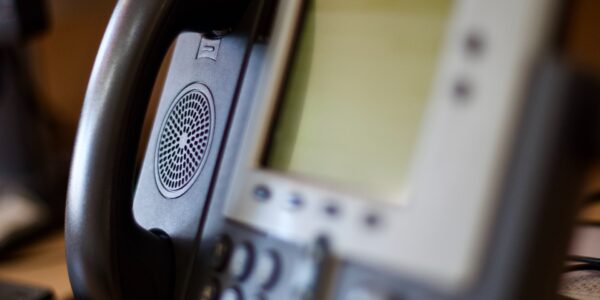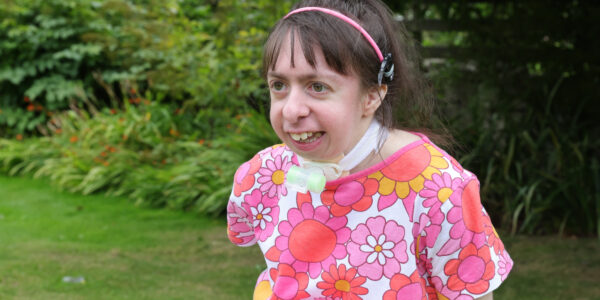Deafness and hearing loss
This page answers some common questions about deafness and hearing loss.
It includes links to more detailed information on most key aspects of deafness and hearing loss, including causes and types, hearing loss in children and technology-based aids.
Looking for support?
We offer support for disabled people all over the UK. To find out what kind of support we could give you or your loved one, speak to one of our friendly team.
On this page:
- What is deafness?
- Types of hearing loss
- What causes deafness?
- Signs of hearing loss in children
- How many deaf people are there in the UK?
- Is being deaf a disability?
- Hearing aids, implants and other devices
- Information and support for coping with hearing loss
- What benefits can I claim if I’m deaf or have hearing loss?
What is deafness?
Deafness or hearing loss is a difficulty hearing or recognising sounds.
Hearing loss happens when a part of the ear or hearing system doesn’t work properly. This can be temporary or permanent.
There are different levels of hearing loss depending on how loud sounds need to be for you to hear them. There may also be some sounds that you hear better or worse than others. For example, you can be partially deaf (able to hear some sounds), or profoundly deaf (very little or no hearing).
There are lots of different terms for hearing loss, including partially deaf, profoundly deaf, hearing impaired, hard of hearing and D/deaf. People with a hearing loss will make their own choice about which term to use.
Some people describe themselves as “Deaf” with a capital “D” to express pride in their Deaf identity. It’s important to remember that many don’t see their deafness as something they would like to be “cured”.
How the ear works
Typically, the outer part of the ears (pinna) filters soundwaves and sends them down the ear canal, causing the eardrum to vibrate.
These vibrations are then passed across the middle ear by three tiny bones (ossicles): the malleus, incus and stapes, also known as the hammer, anvil and stirrup.
The ossicles increase the vibrations before they pass through into the cochlea (part of the inner ear, shaped like a snail shell), where thousands of sound-sensitive hair cells create signals.
The auditory (hearing) nerve carries these signals to the brain, where we understand them as sound.
When one or more of these parts of the ear don’t work properly, sound signals can’t reach the brain, causing hearing loss.
How hearing is measured
Hearing is measured in two key ways: volume and pitch. When you have a hearing test, the specialist will be trying to find the quietest volume of sounds that you can hear at different pitches, or frequencies.
Volume of sound is measured in decibels (dB), and pitch is measured in hertz (Hz).
For you to hear a sound, it must be above a certain level of decibels. This is known as your “hearing threshold”.
Hearing thresholds are categorised as normal (no loss), mild, moderate, severe or profound loss.
What does “profoundly deaf” mean?
Profoundly deaf means that you cannot hear sounds below 95dB.
To give an example, the volume of a jackhammer at a distance of 15m from you is about 90dB. Meanwhile, the typical volume of speech is around 60dB.
Types of hearing loss
There are two main types of hearing loss:
- Sensorineural hearing loss.
- Conductive hearing loss.
Sensorineural hearing loss
This is caused by damage to the hair cells of the inner ear, the auditory nerve or both.
These hair cells and your auditory nerve are responsible for carrying sound signals from your ear to your brain.
Sensorineural hearing loss is the most common type of hearing loss. It is permanent.
Conductive hearing loss
This happens when something stops sound waves passing from the outer ear to the inner ear. This could be caused by wax in the outer ear or fluid in the middle ear (sometimes called glue ear). It might also be a problem with the ear drum or the bones in the middle ear (ossicles).
Conductive hearing loss can be temporary or permanent. Sometimes it can be corrected by surgery.
Mixed hearing loss
It is possible to have both sensorineural and conductive hearing loss.
This is known as mixed hearing loss.
What causes deafness?
There are many different causes of deafness and hearing loss, including:
- Ageing.
- Exposure to loud noise.
- Genetics.
- Complications and infections during pregnancy, including rubella, cytomegalovirus (CMV), toxoplasmosis and herpes.
- Various syndromes associated with deafness, including CHARGE syndrome and Usher syndrome.
- Damage from prescription and over-the counter drugs.
- Acoustic neuroma (a tumour that presses on the hearing and balance nerves).
- Head injury.
- Foreign objects in the ear.
- Minor infections that could cause temporary hearing loss.
Find out more about types and causes of deafness and hearing loss from the Royal National Institute for Deaf People (RNID) and the National Deaf Children’s Society (NDCS).
Find out more about rubella, CHARGE syndrome and Usher syndrome.
What is congenital deafness?
Congenital deafness or hearing loss is a complete or partial loss of hearing present at birth. It can be sensorineural, conductive or mixed.
The most common cause of congenital hearing loss is genetics.
It can also be caused by premature birth, low birth weight and injuries at birth.
One to two babies in every 1,000 are born with permanent hearing loss in one or both ears.
This increases to about one in every 100 babies who have spent more than 48 hours in intensive care.
Permanent hearing loss can significantly affect a baby’s development without the right support.
That’s why it’s so important to find out early through newborn screening. Identifying hearing loss at the earliest opportunity helps children and families get the support they need.
Find out more about newborn screening through the NHS.
What is acquired deafness?
Acquired deafness or acquired hearing loss is any kind that happens at any point in life after birth. This could happen because of injury, disease, exposure to loud noise or gradual deterioration of the inner ear with age.
Signs of hearing loss in children
The following signs may indicate hearing loss:
- Red ears in babies and/or pulling at their ears.
- Changes in behaviour, such as becoming withdrawn, tired or frustrated.
- Delay in their speech and communication development.
- Reading and learning difficulties.
- Mishearing and mispronouncing words.
- Not hearing what’s going on if there’s background noise.
- Not responding when called.
- Concentration problems.
- Needing the TV to be at a higher volume than other family members.
- Being startled if touched.
Find out more about what to do if you’re concerned about your child’s hearing loss.
How many deaf people are there in the UK?
Hearing loss affects approximately 12 million people in the UK.
Is being deaf a disability?
If you’re deaf, it’s up to you to decide whether you identify as disabled. Some D/deaf people don’t identify as disabled, and many don’t wish to “fix” or “cure” their deafness.
Under the Equality Act 2010, people who are deaf or have a hearing loss might be defined as disabled.
This act is in place to make sure that disabled people have equal access and opportunity without discrimination.
At Sense, we support the social model of disability – the understanding that disability is something that is created by society.
This is because disabled people face barriers that stop them from taking part in society in the same way as non-disabled people.
Find out more about the social model of disability.
Deaf culture and identity
Many people in the Deaf community describe themselves as “Deaf” with a capital “D” to express pride in their Deaf identity.
The Deaf community has its own set of social beliefs, behaviours, art, history and values.
British Sign Language (BSL) is the language of the Deaf community in Great Britain.
Hearing aids, implants and other devices
While not everyone with hearing loss wants to use them, wide-ranging technology-based hearing aids are available.
For those who do choose them, hearing aids, implants and other devices can help them to hear better, communicate more confidently and live more independently.
Types of communication
There are may ways of communicating when living with deafness or hearing loss:
-

Using touch
- Braille uses raised dots to touch.
- Deafblind Manual spells words on to your hand.
- Block alphabet spells letters on to your hand.
- Moon uses raised lines, curves and dots to touch.
- Tadoma uses lipreading by touch.
- Hand-under-hand signing using touch.
-

Using signs
- Sign language
- Makaton, a simpler version of sign language.
- Visual frame signing for people with reduced vision.
- Objects of reference
-

Using speech
-

Also
- Non-formal communication without speaking, writing or signing.
- Intensive interaction treating everything as communication.
Information and support for coping with hearing loss
If you or your child have just been diagnosed with hearing loss, it can be a scary time. Everyone’s situation is different.
If you have questions about symptoms or a diagnosis, or need support in other ways, you can contact Sense’s Information and advice service.
RNID also provides local support services across the UK. NDCS provides information and support on all aspects of deafness and hearing loss in children, from first diagnosis to products and technology.
What benefits can I claim if I’m deaf or have hearing loss?
To find out what benefits, grants and other financial support you might be entitled to, including help with energy, food, travel and leisure costs, please visit our Benefits and money section.
Ask us how we can support you
If you or a loved one are deaf or hearing impaired, and would like some support, get in touch with our friendly team.
This content was last reviewed in October 2022. We’ll review it again in 2024.



